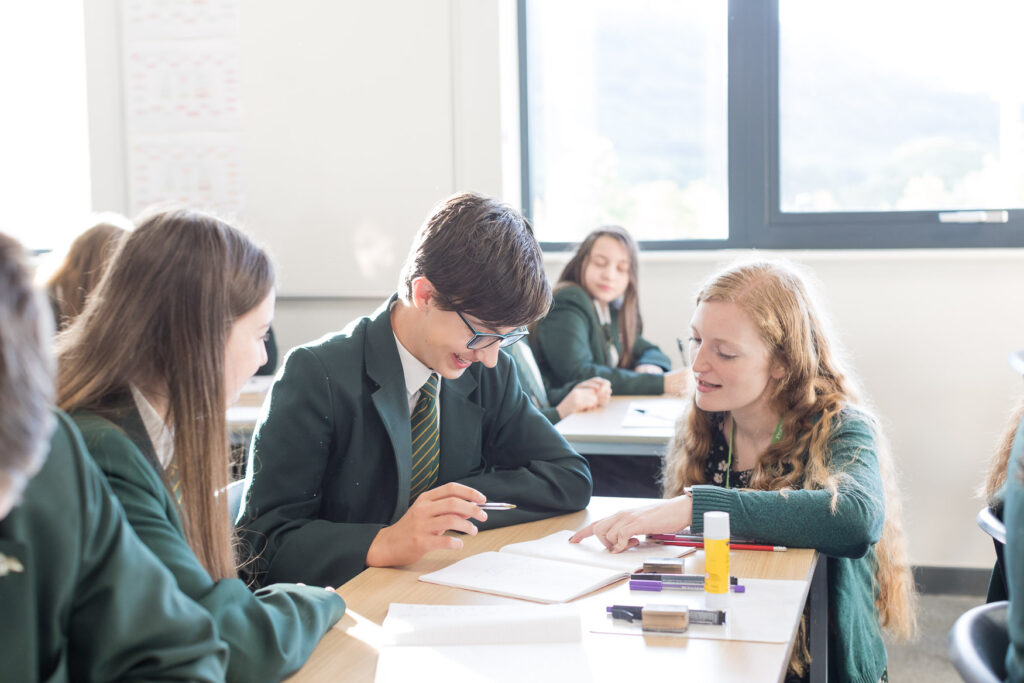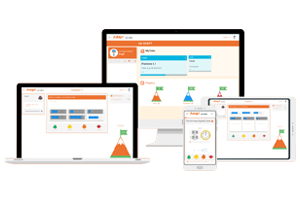One of the great aspects about the teaching profession is that no two days appear to be the same and that there are always opportunities to try things out even after many years and thousands of lessons.
There is much to celebrate in the success of the three part lesson which is now firmly established across the country. Ideas for zappy starter activities can be found in a myriad of resources and the Collins Freedom to Teach resources are great for giving teachers lots of ideas to captivate the interest of students the moment they arrive in a classroom setting. Having mini-whiteboards and post-it notes ready for solutions to be presented at the front of the class always seems to be a winning idea. Asking students to subdivide the whiteboard into four sections with a whiteboard pen is great to ask four distinct questions before the work is wiped. For example, top left write down the cube root of 343, top right work out a third plus a quarter, bottom left what is 15 squared, bottom right calculate the square root of a million. Now check with a student sitting next to see and where there is a different answer, convince your neighbour that you are correct.
I have recently looked more closely at the whole strategy of a lesson plenary in the context that even if a topic has been taught clearly there are sometimes issues with the big challenges of recognition and recall which are, in part, addressed by revisiting key topics in a well-defined scheme of learning. Within the new OFSTED framework, a lesson moving towards ‘outstanding’ requires considerable pace, challenge and innovation among other aspects and a sequence of six or seven episodes that fit well together to enable considerable learning progress to be made. There is an increasing awareness of the need for a sense of ‘Awe and Wonder’ of mathematics and the role it plays in the world around us; therefore an additional ingredient is a need to contextualise the mathematics and give it a sense of purpose and elegance. Students are often intrigued for example when I mention that the Fibonacci Sequence can be found in the DNA of a spiders’ web or the pattern of a nautilus shell.
Following the start of a new academic year and the arrival of a new Principal at Frome Community College, I decided to give a special focus to incorporating student-led mini-plenaries into a lesson to enhance what has been accomplished so far in the lesson and give a sense of shared ownership of the education journey. This has worked especially well when a no-hands up strategy has been deployed. With the assistance of data-rich recording systems including FFTD and test scores, differentiation can be successfully achieved by targeting specific questions for named students. A few times during the lessons, students have been asked to list two or three key points or ‘Key Learning Moments’ so far either to the person sitting next to them or to the overall class. During my lesson observation by OFSTED I asked year 9 students to have a brief learning conversation with the teaching assistant and let him know what has been learned – with the other students listening carefully. I have sought to bring as much variety to the student led mini-plenaries as possible; sometimes, a volunteer has come to the whiteboard to list a key point – sometimes I have asked students to have a ‘news update’ in pairs then requested one pair to talk to another two students. Sometimes I have asked for one key point from the last ten minutes – or one point from the last ten minutes that might not be completely understood.
Having a focus on multi-plenaries this term has been especially illuminating; something I thought was very clear has been not so clear – sometimes the interpretation of the past twelve to fifteen minutes has generated higher level questioning techniques or has moved the focus onto something unexpected. One aspect of this past half-term has been striking; student led mini-plenaries are an integral part of many successful lessons and highlight the fascinating aspect that they serve to address the challenges of recognition and recall that may exist even when a topic has been clearly taught. Students taking ownership of the refocus on lesson objectives and the learning journey can help them look back and look forwards with increasing confidence and self-steem.
Christopher Curtis




